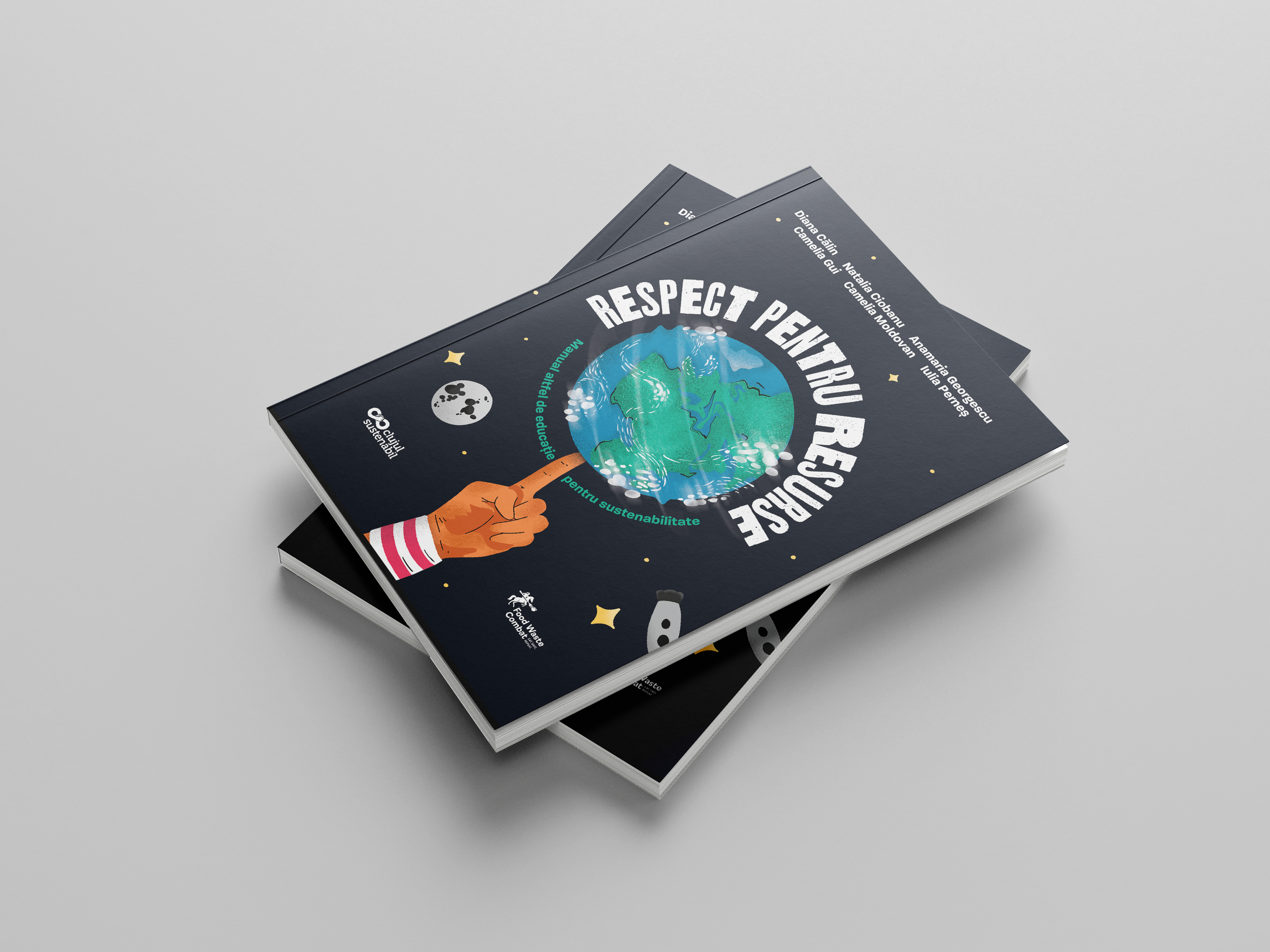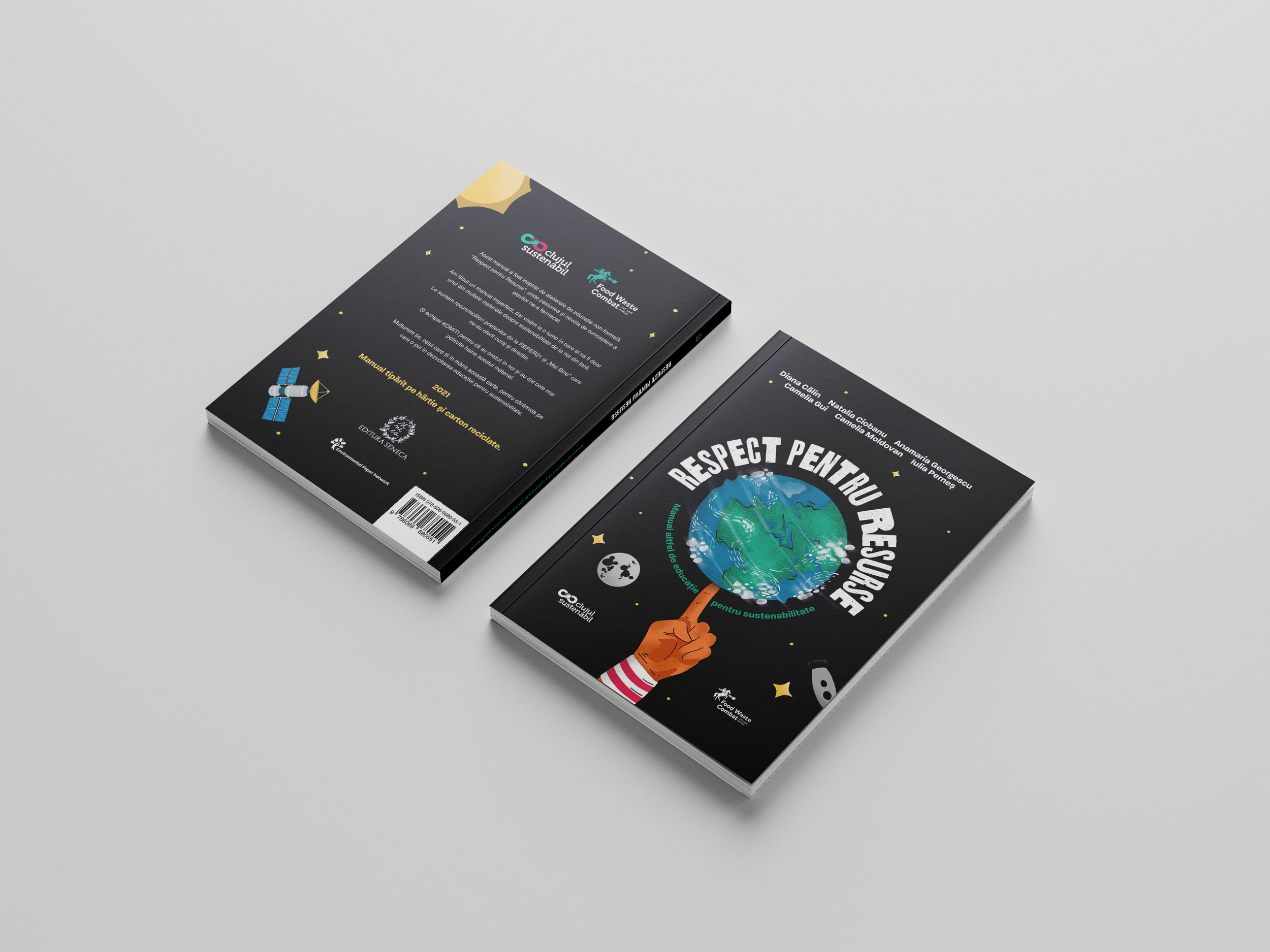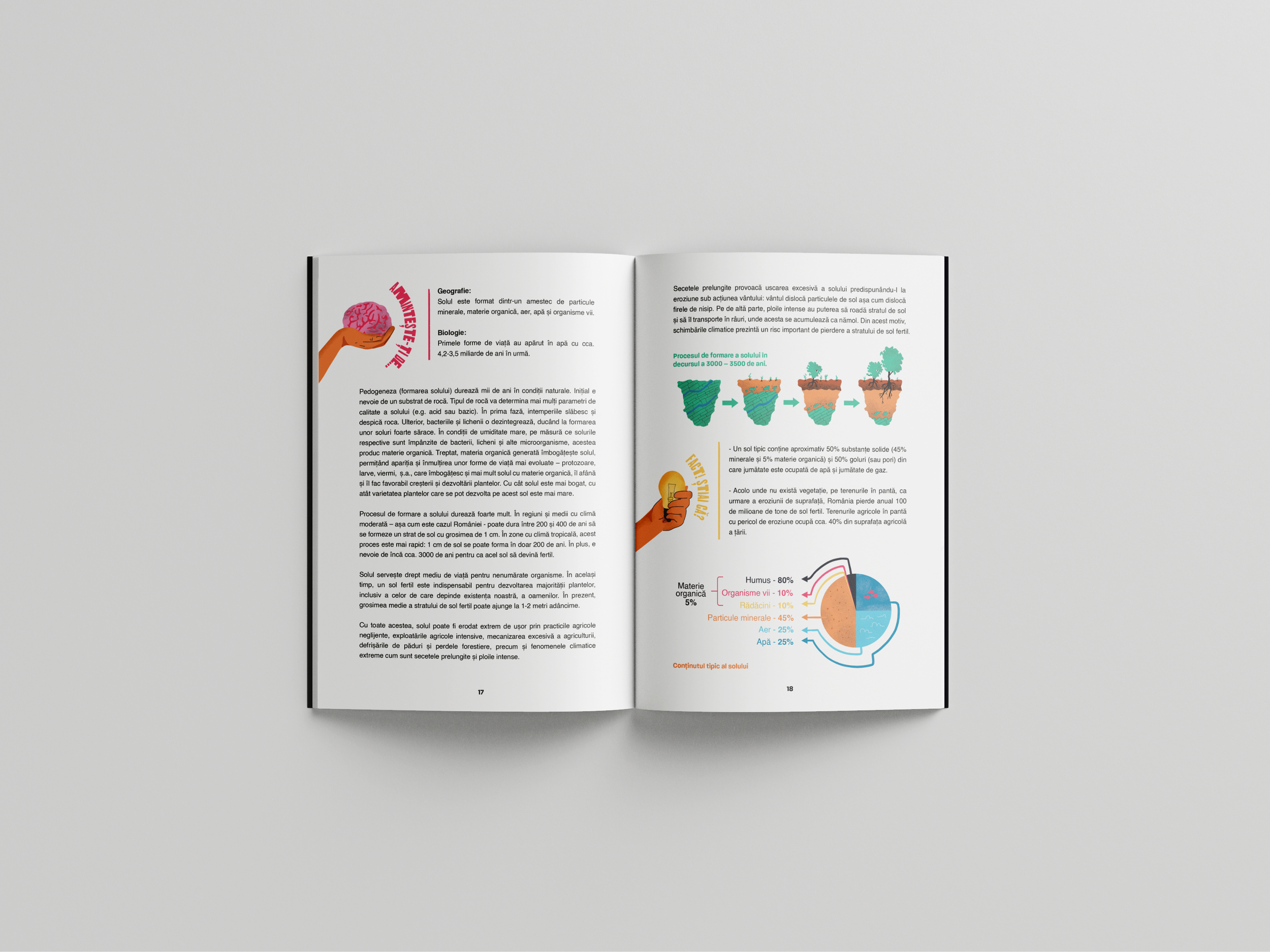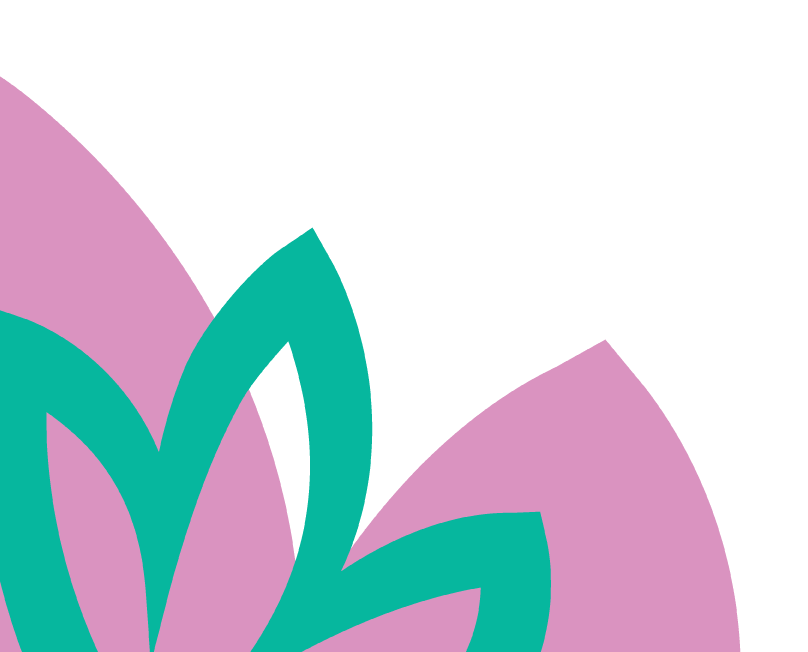RESPECT FOR
RESOURCES
Year:
2021
Role:
IInstructional Designer, Content creator and Project Manager
Creation of a sustainability education manual for schools in Romania
Brief:
Tools:
Excel, Word
Instructional design, Learning theory design
Skills:
For this project, I have used the ADDIE instructional design methodology and a KOLB experiential learning design.
A – Analyze
This was a crucial part of the process, as we wanted to make sure that the education manual is created for the children specifically, to have the schoolbook that they have always wanted and to make sure that the teachers are open to non-formal education. Because that was one of the approaches, to be more non-conventional and bring more updated methods from instructional design to a traditional educational system.
For this we had a needs analysis through focus groups with children and teachers that told us what they would like to know more about, what colors should the manual have and how easy to carry it would be. We took into consideration all their requests.
In this phase we also scoped out the support network of teachers announcing to them that a manual will be published and if they would be interested in teaching from it. While also searching out for our peers to learn from their lessons.
This was a very fruitful phase that helped us complete our initial needs analysis.
D – Design
In this phase we created a big file with all the weeks from a school year, chosen the topics for each week and then designed the learning objectives and competencies for each topic alone.
This is where we decided on the voice, tonality, language and structure of each lesson and built a template guide for each team member that was writing content.
For this manual I chose the KOLB method: first part of the lesson was a hook question that would open the text, then the theoretical part in a sufficient amount and continued with a practical activity. And the lesson would end with a reflection question or debriefing in pair. The challenge was to introduce a topic that would be presented in 50 minutes which needed to include a practical activity that included a full class of children (of 25 to 30 persons). This was one of the biggest challenges to design the instructions of each lesson in a way that accomplished our biggest objective: making school content more engaging and interactive.
And because we understood well our approach to a traditional school system, we created the teacher’s toolkit in addition to the manual. That meant a little book with guidance for each lesson together with a list of resources required for the activities.
D – Develop
During the development of the content, we started to collaborate with the graphical designer that brought the color and visuals to our instructions and content.
We designed the overall vision of the manual and created illustrations for each lesson aside, while also having treasure map progress along the manual.
We also made sure that the number of pages per lesson is no longer than 2 pages, in order to make the book easy to carry.
We developed the content and reviewed by multiple people until it was declared finished and ready to be sent to the graphical designer.
I – Implement
Implementation for this project meant that the manual was ready to be printed out and launched to the teachers. We had training sessions with the teachers, by doing samples from the lessons and immersing them in non-formal education.
E – Evaluation
The evaluation of this final product was during the training sessions with the teachers by receiving live feedback and reaching out to them 6 months after they started to teach from it.
Lessons learned
One of my biggest lessons from this is that it was an enormous responsibility to create a manual that will be taught to children, and this came with a lot of pressure. And it was also of the most rewarding challenge because the impact and feedback was astounding. We managed to meet the level of expectations of children and teachers.







